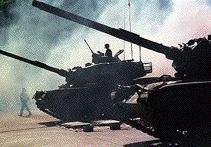
The Influence of War on Economy
(Or The Influence of War on a Country?)
by Bill Hesketh

“A nation that continues year after year to spend more money on military defense than on programs of social uplift is approaching spiritual doom” -Martin Luther King Jr.
From World War I to the most recent ‘War on Terror’ our economy has seen night and day differences: WWI, to the roaring 20’s, the Great Depression to WWII, the expansionist 50’s and 60’s into Vietnam. We can’t grip a steady and consistent economy because our economy is fueled by war. Who wants to be consistently in a state of war? The US has both thrived and struggled in funding and borrowing money in the name of war. We have been both creditors and debtors in the game and have watched the ebb and flow turn in our favor and back again. The problem is, the US cannot grip a steady economy because the military industrial complex takes precedence over the social and economic elements of this country. War drastically affects our economy in negative and long-term ways. As a country, in these particular times, we need to seriously re-evaluate how we manage our budget and decide what is and what is not important. We need to find an economic engine other than the military/industrial complex.
The cattle industry is an excellent example of how war directly affects American industry. During and after the civil war cattle prices were very high and the market soared from the 1860’s to the 1870’s, mostly due to scarcity because ranches were often times battlegrounds. Also, feeding troops helped increase demand for the scarce commodity. In 1872, a depression hit and the cattle industry suffered greatly. The debtor to creditor swap for the US in WWI was the next big boom for ranchers. From the 1920’s until the depression in 1930 cattle ranching saw one of the most favorable stretches in American history as an investment. As the trend would point out, the value of cattle significantly dropped about ten years after the war. WWII was the next cause of price and value inflation in the cattle industry. “From 1941 until 1951 (into the Korean war) cattle prices flourished and then dropped off by 50%” (Holecheck).


The clear and consistent pattern that relates directly to the economy and the wars of the US has been taken advantage of by Wall Street investors. Scarcity, supplies and rations for troops along with the economic boom in the beginning of every war blast the profitability of the cattle industry into the stratosphere. In turn, when a war comes to an end, ranch owners and workers take a hard hit. Wages for workers plummet; real estate values of ranches go down; the price per head of cattle hits the floor; and employment rates drop. There is a very fine line for ranchers when it comes to avoiding debt caused by this pattern. Wall Street understands the patterns that come with war and use this to their best advantage by selling high and buying low. To give further proof on a more general scale, the Dow Jones index plunged 6.31% following the invasion of Kuwait in 1990 due to the impact on the price of oil but, it gained 17% in the first four weeks of Operation Desert Storm. Then, in the opening weeks of the Iraq war the European stock markets went up by 2% (Schneider 624). Case in point, there is no consistency or fair balance for an economy in war.
 =>
=> =>
=>
 =>
=>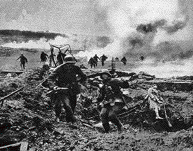
Another problem with the US is that we can’t tell friend from foe when it comes to money. We arm our enemies with profit in mind, and are shocked when their weapons turn on us. From the years of 1937 until 1940 the US was Japan’s number one supplier of goods, both military and peaceful products. “The US is constantly regarded as the prime source of Japan’s imports and the largest external (non-yen) market of Japanese goods” (Bisson 123). In the years of 1937 and 1938 the US supplied over half of Japan’s wartime materials and in 1939 to 1940 even more, mostly thanks to European trade restrictions of the time. “There were seven leading imports for Japan: petroleum and petroleum by-products, scrap iron, copper, aircraft, semi manufactures of iron and steel, and automobiles” (Bisson 123). The US profited from this market monopoly, even while condemning Japan’s aggressive actions towards China and other near-by countries. At the same time, the US continued to make up nearly 95% of Japanese imports.
When Japan finally invaded Manchuria, taking violent and oppressive action against China, only the US could take the responsibility for arming the Japanese. As peacetime products such as cotton and timber were bought less and less by Japan, wartime products rose at an alarming rate. Cotton and timber were piled high on US docks awaiting the trade that had suddenly halted with Japan. The value of these peacetime products took a sharp drop during these years. With the newly acquired Manchuria, Japan no longer had absolute need to trade for raw materials and was becoming an independent country. In essence, the US sold Japan the means to become a super power. The equipment and supplies used in the Pacific and in Pearl Harbor were undoubtedly used against our soldiers and sailors, our allies and civilians all in the pursuit of profit.
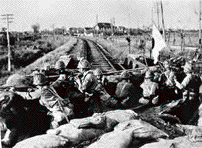

The example of Japan has two very important points. First, the US knew that Japan was an ally of the Axis, but with that knowledge we continued to trade with them. We condemned their violent steps against China and the Pacific Islanders publicly, but accepted their cash for our manufactured armaments as well as raw material (not so publicly). Secondly, we lost a market for peacetime products. The value of timber, cotton, tobacco, etc. dropped as they stayed stock piled on our docks while the materials of war flourished under extremely profitable circumstances. It was foreseeable and obvious that Japan was going to commit acts of war. In the end, we lost many lives and finances fighting against our own investments.
Many people would tell you, and be right in saying, that WWII pulled the US out of the Great Depression. The most overlooked and generally accepted fact, which we adapted from that, is that war can solve most, if not all, of our economic problems. In May 1940, there were approximately 8.4 million people unemployed in the US. By May 1942 that number had decreased to about 2.6 million thanks to WWII. Our standing military in 1940 was about 500,000 troops, and just two years later in1942 it was around 3,000,000. Not only did much of our work force go to war, most went to the war effort at home: “from about 500,000 armament workers to over 10,000,000 working hands” (Schwartz 827). This goes to show just how effective our economy and workforce had become all in the name of war. The “military industrial complex” was born during this era and it’s something that we have been unable to disarm.
Post WWII, the middle class flourished under never before seen circumstances. The middle class was born with the help of low mortgages made available for returning soldiers, the re-conversion of military factories into automobile shops, the baby boom, and the modernization of aviation. The nation's gross national product soared; “the total value of the GNP in 1940 was about $200,000 million, then $300,000 million in 1950, and to more than $500,000 million in 1960” (Conte). As the nations wealth became more predominant into the 1950’s, the number of white-collar workers began to approach that of blue-collar workers. Finally, by 1956, white-collar workers outnumbered their “less educated and less affluent neighbors” (Conte). The farm industry, as another example, has been steadily losing its workers because of large-scale farming, international imports and better technology. “There were approximately 7.9 million farm workers in 1946 but over the course of about 50 years (in 1998) that number fell to less than half—3.4 million”. (Schwartz).
This is a trend that has finally caught up to us these days. It was common knowledge in my youth that carpenters, manufacturers, plumbers and other blue-collar jobs were less the ultimate goal than were “professional” white-collar jobs. It was the goal for every child to get to college, graduate and make an upper middle class wage from a desk and a computer. Now, the country is seeing a decline in skilled labor as blue-collar jobs disappear due to technology and to the incentives for moving jobs over-seas. With the trends and ideals of the 40’s and 50’s still held valuable by middle class citizens, but with no World War to support them, and more jobs (both white-collar and blue-collar) going over seas, the middle class finds itself shrinking.
As the nation grew comfortable and the middle class emerged in the US, the people became complacent and ignorant. The public policy priorities had been firmly shaped by two World Wars in the first half of one century. By 1950, in the midst of American prosperity like none ever before, National Defense spending as a percent of the Gross Domestic Product was more than double that of non-defense Federal spending. “Defense spending took up 32.2% while non-defense Federal spending took 15.6%” (Tassava). Today, according to Congressional Budget Office estimates, the federal budget deficit for 2010 will exceed $1.3 trillion. The military defense budget request for 2012, according to the Department of Defense, is $685 billion—with a B—dollars. Completely eliminating the defense budget for one year would cut the country’s accumulated deficit by half. That is not reasonable to expect or even hope for but, it gives a good idea how much of our public investment is unavailable for other things like energy and technology because of military spending. If a public official of any sort were to mention the idea of downsizing our military, he or she would be publicly shamed into the stereotype of “unpatriotic”.
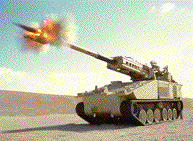
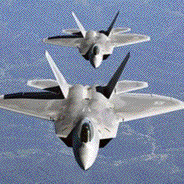
“The price of military goods and services has increased more rapidly than prices in both the non-military government sector and in the economy as a whole”- Fordham 574.
American history is full of mistakes and fallacies all relating to the military industrial complex. No realistic politician will ever publicly admit that there is a need to downsize our military. In current times a tomahawk missile costs 80,000 dollars, and that’s probably an outdated weapon by now. Keep in mind that a missile can only be used once… because it explodes! But when, say, a state employee who diligently works and does a good job and is paid the same amount annually (or less!), the public cries out in anger and blames the faithful public servants for their unjustified tax dollar salaries. There is something wrong with our 'democratic' society. Today, according to the Department of Defense, the U.S. has over 700 military bases in more than 50 countries. These are not likely to be statistics that are commonly known. For Instance Fox News doesn’t broadcast how much it costs to keep an Army installation up and running in Somalia, or an Air Force base in Germany, or even a Naval base in Japan. But Americans foot the bill not only in dollars, but also in lost opportunity to invest in other areas that would be to the public benefit. Can you imagine if there were a Japanese naval base in Seattle? What if there were a British air force base in Houston? How about a Russian military base just outside of Miami? Of course you could never imagine these things, but the rest of the world has to deal with US military bases in their backyard twenty four hours a day, seven days a week. We the people of the United States of America (God bless us protectors and saviors of the world) have to pay for them.
Our economy has been toyed with for nearly a century. Clearly, war as our economic engine is a situation that we can afford less and less—not only economically but also socially and morally as well. In these current days our public employees are under attack and being held accountable for a budget crisis that could have been solved by cutting the military budget. There is an expectation that constant conflict will solve the problems of the economy. Clearly this is not the case.
We need to create a new economic engine for our country. We can reinvest even a small percent of the military budget in technologies and sectors that will reap greater returns than “disposable” missiles. Clean energy, sustainable construction, infrastructure, and appropriate farming techniques are all areas that can support continued employment and thereby replace a large part of the military industry as our economic engine. We need to bring back manufacturing jobs from over seas, cut military spending and increase public education’s budget. Otherwise it’s time for World War III.

